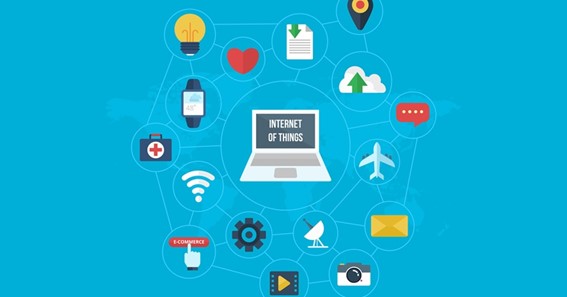Technology is evolving rapidly. From touch screens to microphones, and more recently the ability of devices to interact with each other are all results of technological innovation. Think of smart microwaves which automatically cook food for the right duration, self-driving cars with sensors that detect objects in the way, and smartwatches that measure the heart rate and count the number of steps. All these smart devices work with an internet connection plans like Spectrum Wi-Fi plans, or any other high speed service plan.
What Is the Internet of Things (IoT)?
The Internet of things is not fiction anymore but is progressively becoming a significant aspect of life. Till now, networking technologies were connecting only traditional devices like laptops, desktops, tablets, and smartphones. However, with the advent of IoT, billions of gadgets like household appliances, vehicles, digital assistants, medical devices, and smart TVs are all connected. Thanks to the arrival of inexpensive computer chips and high bandwidth telecommunication that are enabling new use cases for this technology.
In simpler words, IoT refers to millions of electronic devices connected via the internet to send data, receive instructions, or both. The smart sensors embedded in these devices enable them to transfer real-time data without human involvement. Smart homes, energy conservation, and smart transportations are all results of this technology.
Click here – Causes of Overheating in Laptops
How Does IoT Work?
IoT is making the earth smarter and more responsive by combining the digital and physical worlds. The IoT ecosystem consists of smart devices that use embedded sensors and processors to collect, send, and analyze data collected from the surroundings. At times, these devices give instructions to each other based on this information. They work mostly without any human intervention, even though people can program or set them up.
Any physical object can be converted into an IoT device with an internet connection. For example, a simple lightbulb can become an IoT device if it can operate through a smartphone app. Similarly, a motion sensor embedded in the office is also an IoT.
Benefits of IoT to Businesses
Let us have a look at some of the advantages of using IoT in businesses.
Reduced Human Labor
IoT automates repetitive tasks so humans can concentrate on more complex ones that require personal skills and creativity. This way, businesses need fewer workers which reduces the overall operational costs.
Efficient Use of Resources
The interconnected sensors automate the scheduling and monitoring of resources. This enhanced management minimizes wastage and leads to improved water consumption and power management. Even simple motion detectors cans save huge costs in water and electricity bills increasing profits for the business.
Enhanced Work Safety
Smart devices lower the chances of human error during all stages of business operations, contributing to a higher level of safety. Moreover, surveillance cameras, motion sensors, and other monitoring gadgets ensure the security of an organization and prevent robberies and corporate espionage.
Targeted Marketing
Smart devices installed in homes like digital voice assistants and many others directly communicate with users and function as a major source of information for marketers and business analysts. They help businesses gather large volumes of user data like their interest, hobbies, lifestyles, and demographics which they use for targeted advertising, customization of business strategies, price adjustments, and other marketing and management practices.
CLick here – Smart Buyer Chooses a Smart Air Conditioner
Examples of IoT
UPS
One of the largest shipping companies in the world, UPS uses sensor data and big-data analytics to improve efficiency, save costs, and lower its environmental impact. It uses sensors on its delivery vehicles to check mileage, speed, number of stops, miles per gallon, and engine health. This information enables it to reduce idling time, harmful emissions, and fuel consumption.
John Deere
John Deere, an agricultural equipment manufacturer, is using the John Deere Field Connect system to monitor moisture levels and send this data over a wireless connection to be viewable to all farmers. These special sensors measure the air and soil temperature, solar radiation, humidity, wind speed, and rainfall. This enables farmers to determine when crops will reach the maximum moisture level and make timely irrigation decisions.
Disney World Magic Band
The magic band is a wearable wristband with in-built sensors, that visitors use to check into hotel rooms, reserve spots for attractions, buy lunch, and go through gates at the amusement parks. The visitors ‘check in’ at several places by tapping the band against a scanner that recognizes the code via RFID. This way, Disney tracks their movement all over the parks. This information helps it to accommodate more guests, regulate inventory at crowded stores and restaurants, and staff rides and attractions adequately.






